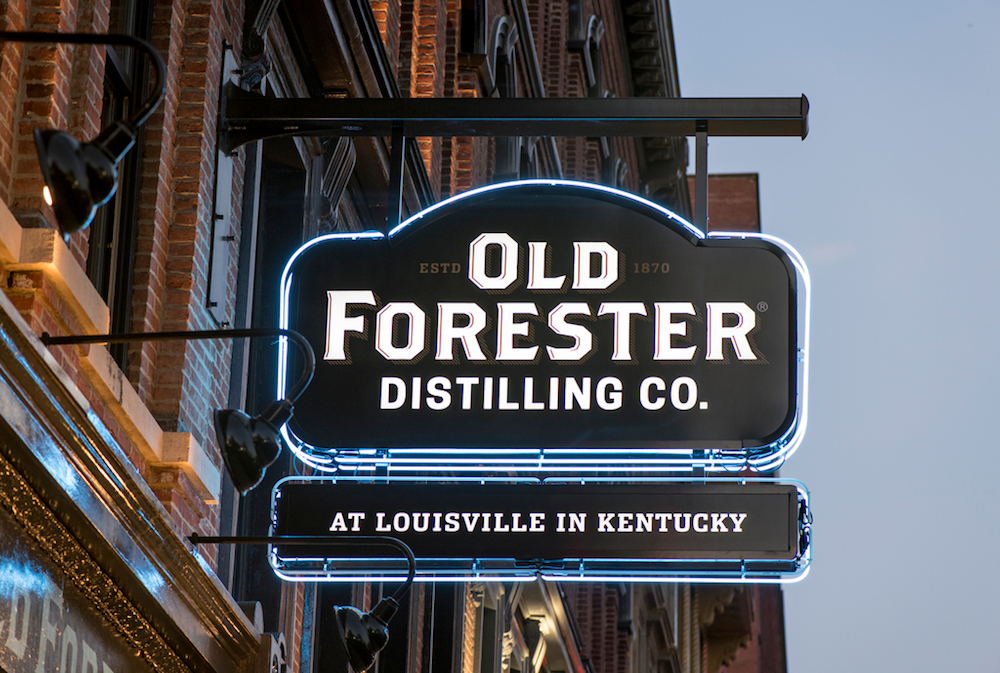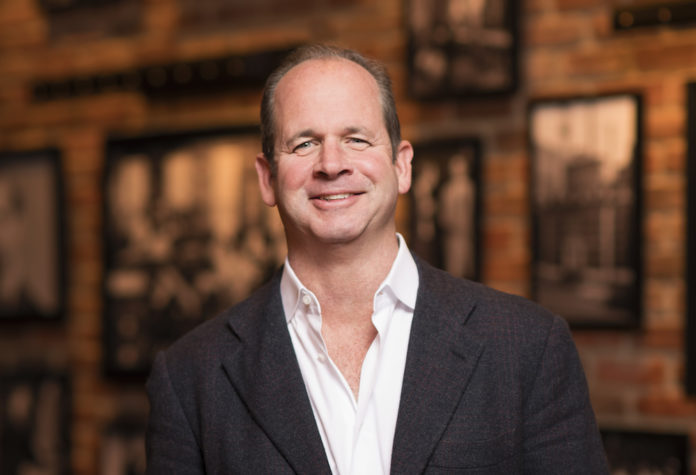Brown-Forman is synonymous with American whiskey. Beyond the quintessential Tennessee whiskey Jack Daniel’s, the company also owns the Kentucky brands Woodford Reserve, Cooper’s Craft and Old Forester.
It’s the latter where this story began. In 1870, pharmaceuticals salesman George Garvin Brown began bottling his own whiskey under the name Old Forester Kentucky Straight Bourbon Whisky. Brown later partnered with his accountant and friend, George Forman, creating Brown-Forman.
150 years later, Brown’s great-great grandson Campbell P. Brown now serves as president and managing director of Brown-Forman’s founding brand. In January he was named the incoming Chairman of the Board for Brown-Forman, a position he will assume in July following the retirement of George Garvin Brown IV. We recently spoke with Brown about Old Forester’s past, present and future, along with the ongoing growth of the whiskey category.
Beverage Dynamics: How did Old Forester emerge in the 19th century?
Campbell P. Brown: My great-great grandfather thought he could deliver something to his customers that centered on quality and consistency, from a standpoint of putting whiskey in a bottle and selling it exclusively by the bottle. He put his seal and signature of approval on every bottle, which became part of a bigger change in the industry towards quality and consistency.
BD: Old Forester has roared back in modern time. How come?
CB: I think there are a number of reasons. Obviously the consumer is really finding the bourbon category to be interesting. And there’s been a change in the palates of many consumers and bartenders, who now look for more complex and mixable drinks.
Old Forester has benefited disproportionately from this, because bartenders have always been superb ambassadors for this brand. This is a brand that has been around 150 years in America without any interruption in production, before, during and after Prohibition. That’s a unique story that people like to tell, and many bartenders do.
One of the other things is that we are a bigger company, so we can delivery a complex and approachable whiskey — with that texture and story — at an affordable price point that few others can match.
It also helps that Old Forester is performing well in the best-versed bourbon market in the world: Kentucky. That’s a nice endorsement that we lean into.

BD: Old Forester recently opened a distillery in Louisville’s Whiskey Row.
CB: Look at our company, and one thing we’ve always done well is our home places. But our founding brand never had a home place. So seven to eight years ago, our leadership team invested $50 million into a home place for a brand that was, back then, below 100,000 cases annually. You’ve really got to give it to them for that. Because the Old Forester distillery has gotten some real traction. We were able to acquire two buildings that were the original offices of George Garvin Brown. In them, we built a fully functional distillery and cooperage.
It’s worked out real well. Typically, when there’s not Covid, you would have tastings going on, a fully operating bar, and tourists coming in to see the entire Old Forester process. We’re so proud of that distillery and we can’t wait to get it open again for people to enjoy.
BD: Why has Whiskey Row taken off so successfully in Louisville?
CB: More and more, consumers want to see and understand things like what a double-barrel bourbon tastes like. Or what ‘small batch’ means, or what are the nuances of barreling and charring, and what the confluence of all this really means. And that’s driving us to keep pushing the envelope and doing something unique.
BD: In other words, whiskey nerds are becoming nerdier?
CB: Yes. Innovation is driven by the consumer.

BD: Old Forster Master Distiller Chris Morris recently told us he believes the brand can reach a million cases again, like in the 1970s.
CB: I agree. We do about 30% to 35% of our business on-premise, and everybody knows that that channel, sadly, got devastated by Covid. Yet, Old Forester continued to grow at double-digit rates in the past year. Predominantly that growth has been in the United States, though there were pockets of emerging business overseas.
Our partners have driven this growth. People like to sell brands that have momentum.
BD: Congrats on Old Forester and Brown-Forman turning 150.
CB: What a year last year was to celebrate our 150th anniversary! We’ve had a lot of fun using our past as a manner for innovation. We’ve dipped into our history to show what Old Forester tasted like in an older era.
BD: One trend we’ve noticed in 2021 is more full-proof whiskeys. What gives?
CB: Consumers today like to think that they’re all master blenders. They want a whiskey at 130 proof so that they can play around with it and determine where it best sings, whether that’s in a cocktail or by adding water.
Consumers today are also more capable of digesting something of that proof. For years the trend was moving down in proof. Towards flavors that were sweet and less obvious — or really obvious in terms of confectionery-flavored vodkas. Mercifully, people shook off that trend, and now want to see all the different aromas and flavors. Bourbon is a great chassis to do that.
BD: Old Forester is one of many whiskey brands that have embraced store pick single barrels. Why have these exploded in popularity?
CB: Stores love to demonstrate what they do well, and many have been able to deliver good barrel selects consistently. These bottles offer diversity. People can taste how whiskeys can be remarkably different from barrel to barrel.
Distillers and distilleries like to offer experiences that are more personal. We like interacting with consumers and partners in this open and honest experience. And it’s a way of offering our product while demonstrating how special it is — and how special is everything done by the entire distillery team.
Kyle Swartz is editor of Beverage Dynamics magazine. Reach him at kswartz@epgmediallc.com or on Twitter @kswartzz. Read his recent piece 10 American Whiskey Trends in 2021.





[…] Campbell P. Brown Discusses the Growth of Old Forester first appeared on Beverage Dynamics. Read Full Story at source (may require registration) Author: Kyle […]
[…] Other brands were born with the idea of cocktails in mind, and benefited when at-home mixology took off in 2020. For instance, Rising Star Old Forester Rye whiskey. […]